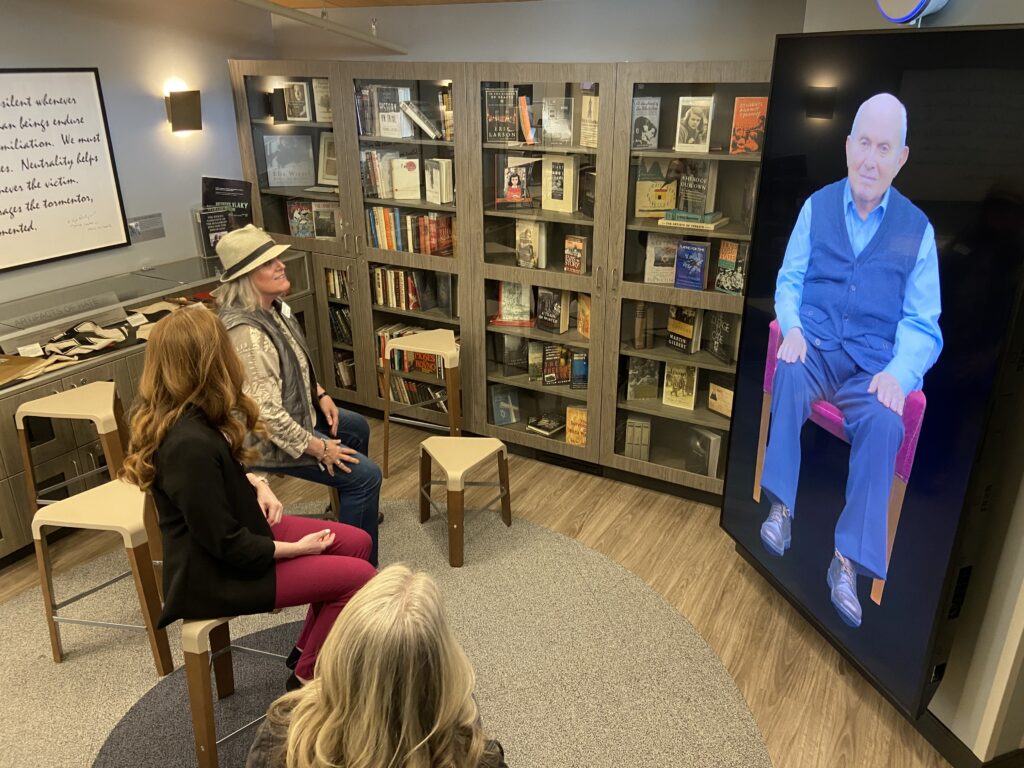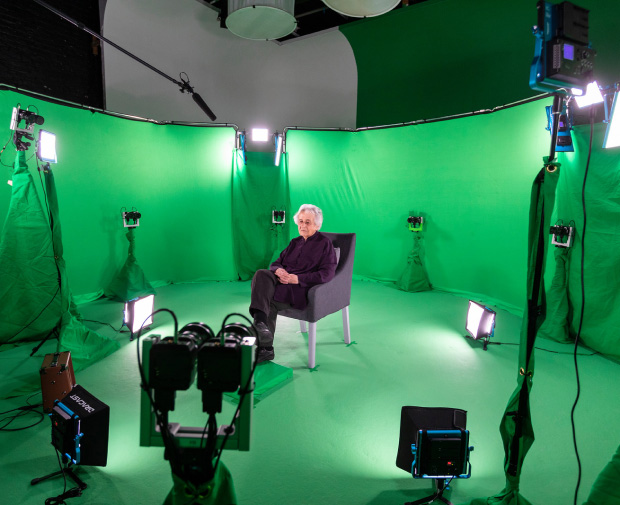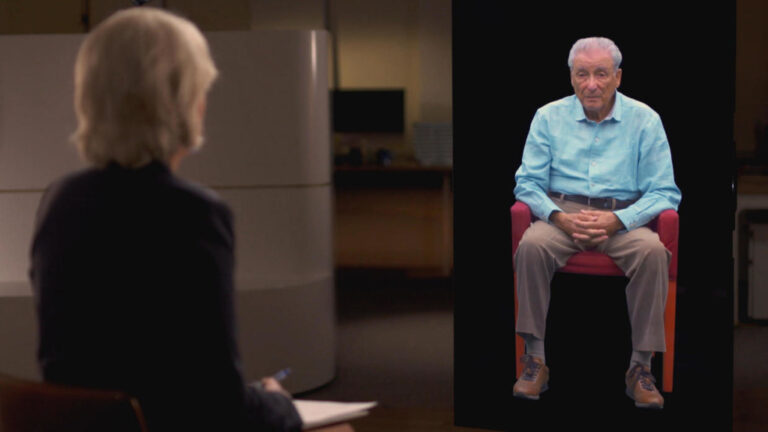The Wassmuth Center for Human Rights is honored to share the USC Shoah Foundation’s Dimensions in Testimony™ exhibit with our community, an innovative and deeply moving experience that brings the testimonies of Holocaust witnesses and survivors to life through groundbreaking interactive technology.
Created by the USC Shoah Foundation, Dimensions in Testimony allows visitors to ask questions and receive real-time responses from Holocaust survivors and witnesses—captured in stunning 3D interviews using advanced natural language processing.
You’ll have the chance to hear personal stories of survival, courage, and humanity in the face of unimaginable injustice—stories that inform, educate, and inspire future generations.
These testimonies are part of a global effort to ensure that, even when survivors are no longer with us, their voices will continue to teach and guide us.

Bringing these stories to life required cutting-edge technology. Each interactive interview was filmed over the course of several days using a 116-camera rig that captured every angle of the survivor’s expression, posture, and presence. Thousands of questions were asked—some deeply personal, others historical or reflective—to ensure an authentic and wide-ranging dialogue experience.
Advanced natural language processing now allows visitors to ask questions and hear real-time responses that are drawn directly from those filmed sessions—no scripts, no edits, just the survivor’s real voice and presence.
At our exhibit, you will encounter:
Eva Schloss, who survived Auschwitz and went on to become a renowned author and speaker
Aaron Elster, who spent two years in hiding in a neighbor’s attic as a child
Pinchas Gutter, the first participant to help bring this technology to life
Anita Lasker-Wallfisch, who survived by playing cello in the Women’s Orchestra of Auschwitz
Alan Moskin, a young soldier with the U.S. Army who helped liberate the Gunskirchen concentration camp
Their stories have been preserved not only for us—but for generations to come.

This exhibit is a facilitated experience led by trained staff and volunteers designed to prompt reflection and meaningful conversation. As you engage with survivor testimonies, facilitators will guide you through:
Connections to the Spiral of Injustice—a framework that helps us understand how everyday acts of bias and exclusion can devolve to violence and genocide.
Thoughtful dialogue about human rights, hope and centering dignity.
Due to the sensitive and sometimes unpredictable content of this exhibit, it is not suitable for young children. Recommended for ages 12+.

This facilitated exhibit is currently only open to the public during our Community Open House Hours:
Fridays from 12:00 PM to 4:00 PM
Facilitated sessions begin every hour
(e.g., 1:00 PM, 2:00 PM, etc.)
For private appointments outside of these hours, please reach out to info@wassmuthcenter.org
- ANNE FRANK
©2024 The Wassmuth Center for Human Rights | All rights reserved | Website by 116 & West | Sitemap | Privacy Policy | Terms & Conditions
©2024 The Wassmuth Center for Human Rights | All rights reserved | Website by 116 & West